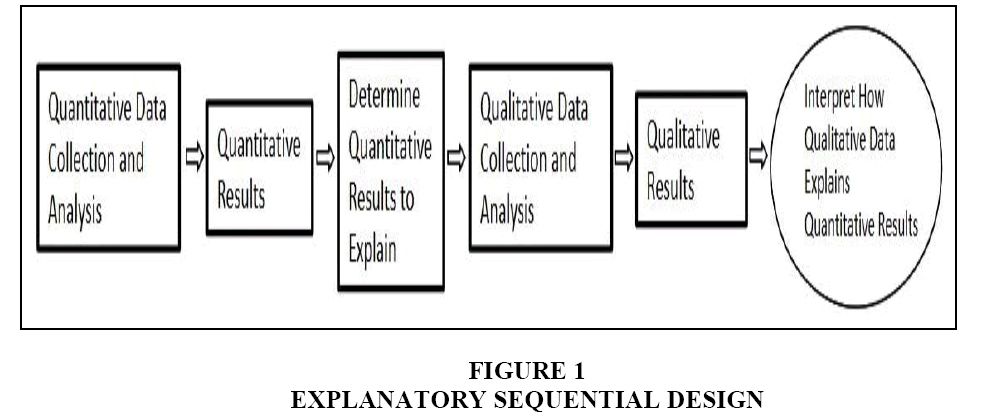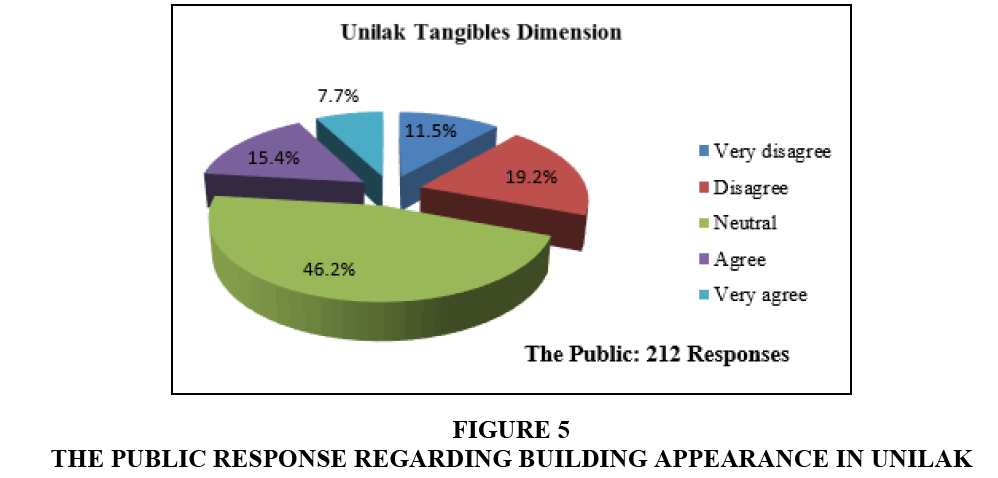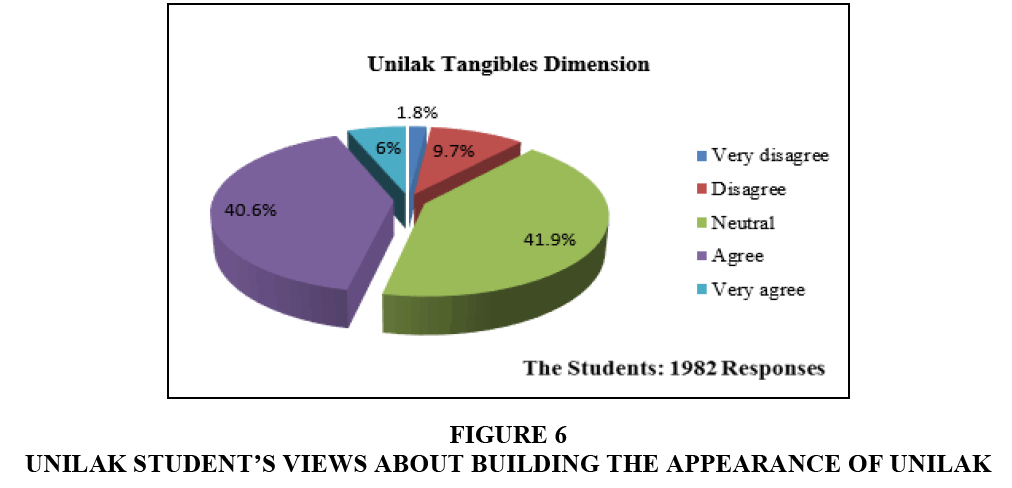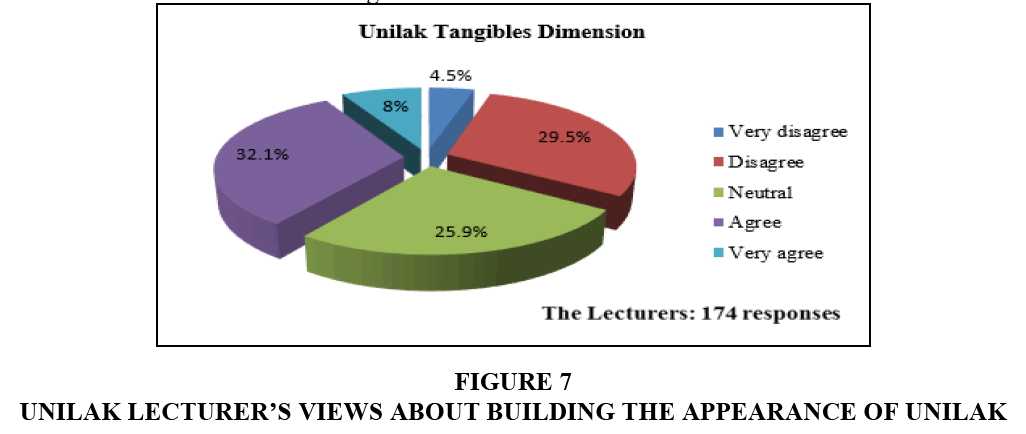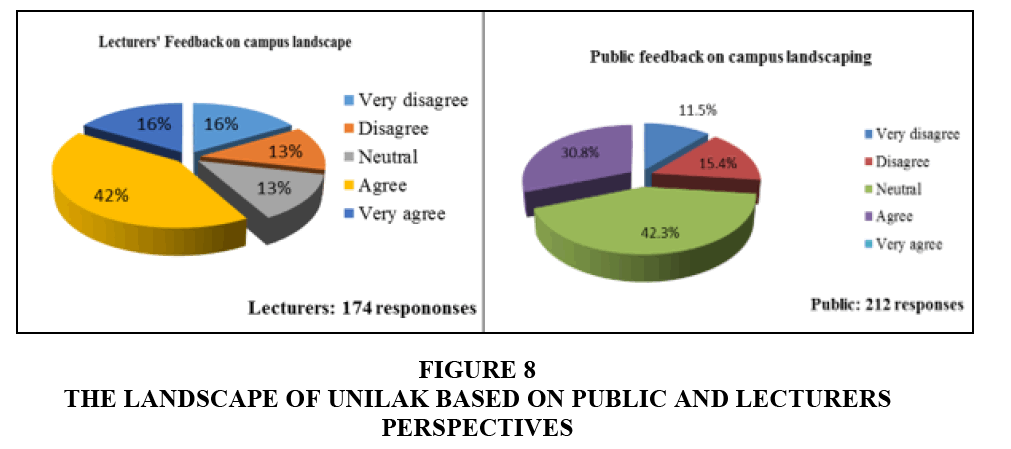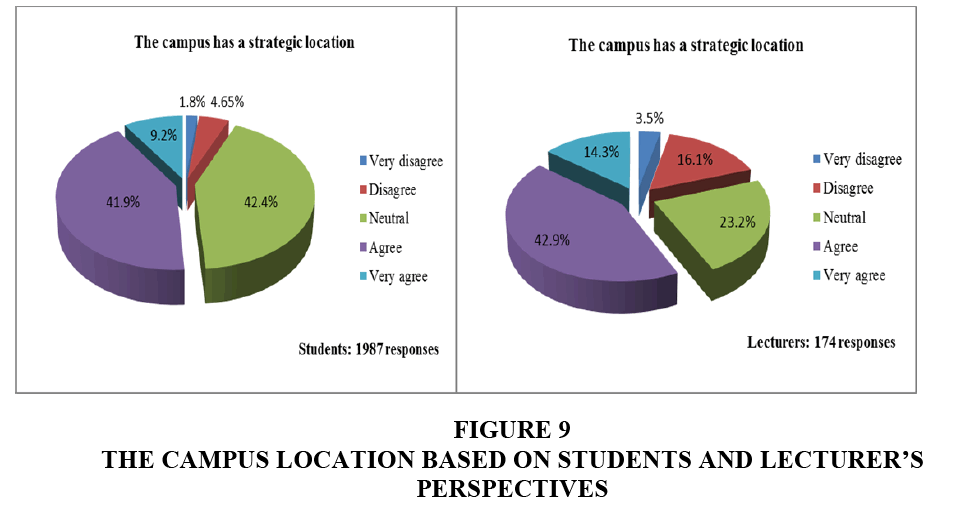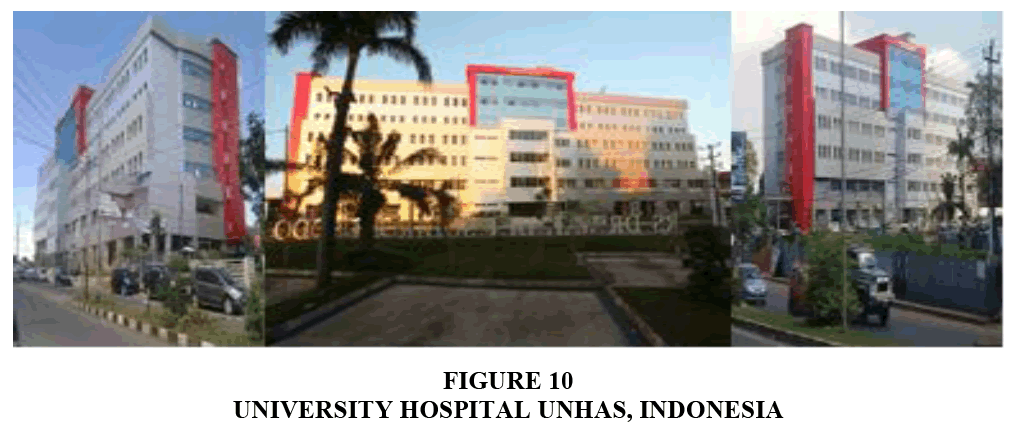Research Article: 2018 Vol: 22 Issue: 4
Seeing University in Tangibles Dimension: A Landmark as a Marketing Strategy for Unilak, is it Needed?
Jeni Wardi, Lancang Kuning University
Dwika Lodia Putri, Lancang Kuning University
Budianto Hamuddin, Lancang Kuning University
Keywords
Tangibles, Service Excellent, Customer Satisfaction, Landmark, Unilak.
Introduction
The present challenge of massive competition among higher education institution in Indonesia forces many universities including Universitas Lancing Kuning, Pekanbaru to see having a landmark as one of the solutions. “Do every university need a landmark?” Is one of the strategical issues rise and switch the debate among policy maker and academia in Indonesian university including Universitas Lancang Kuning Pekanbaru, Indonesia (henceforth: Unilak).
Unilak is one of the famous and prestige private university in the province of Riau, Indonesia. Initiated by the Riau Provincial Government and Riau community leaders, on June 9, 1982. Unilak was established 36 years ago with the main objective of providing a low cost but high-quality education for Riau people. Since its initiations, Unilak presently has nine faculties, 21 departments and two postgraduate programs and already produced thousands of alumnus which spread around the globe.
As its tagline "The Pride of Riau" Unilak seems to have an exclusive place in the heart of Malay community in Riau since its representing the majority of the ethnic groups. As a private university that initiated by the local government of Riau province, Unilak is highly expected to have a strategic role as a higher educational institutions provider in the regions. However, due to the present competitiveness with the presence of the MEA, Unilak as one of the old universities in Riau province, somehow facing a massive and global competition. Therefore, Unilak Pekanbaru needs to think globally and provide excellent services to maintain its positions as a reputable university in Riau and to capture the worldwide market needs.
Facing the massive competitions, Unilak needs to see not only the global needs but need to see also its competitor existences as well. Since Unilak located near the country borders, Unilak should realize that it has so many competitors. Due to its location, Unilak should force not itself not only to see its competitor from the region but also from Malaysia and Singapore universities (Wardi, 2017).
With the increasing number of competitors in a higher education provider, it forces Unilak to find the most appropriate strategy to win the competition, tries to satisfy customers and raise the university pride in based of excellent service dimensions. The main questions in this study focusing on present Unilak's physical appearance regarding market desires. Therefore this study tries to explore the tangibles dimension on Unilak service excellent, including finding out necessities of “lighthouse strategy” by having a landmark for Unilak. The objective of this present study is expected to give a brief perspective about a landmark strategic issue for higher education around the globe by using Unilak as it exemplary context.
Having, a skyscraper building that has functioned as a landmark in many universities in Indonesia rises significantly nowadays. The landmark for some university sees not only as concrete but a building that can be used to attract the attention of the target market and raise the university's pride. Therefore this study started its journey by measuring the level customer satisfaction seeing from Unilak tangibles dimension both from the academia, i.e., students and lecturers and the people of Riau who interact with Unilak then decided whether Unilak needs a landmark or not.
These three groups of informants were needed, to see from many perspectives. In the education services industry, lecturers, students and the public who interact with the university certainly are the customers. The customers expected to get excellent services from the university, while on the other hand, the university should also have standards of quality in providing their services. Regarding, consumer perception of the quality of service itself is a comprehensive assessment of consumers on the excellence of a service (Kotler, 2007). Therefore; this study involved their perceptions in deciding the recommendation.
The recent study about Unilak (Wardi, 2016) found that the improvement in Unilak is already on the right track referring to its road map of development, however, in some parts needs to enforce such as the facilities and new buildings. As a private university that initiated by the local government, Unilak is expected to have a strategic role as a higher educational institutions provider in the regions. As its tagline "The Pride of Riau" Unilak seems to have an exclusive place in the heart of Malay community in Riau since its representing the majority of the ethnic group's expectations and pride. However, due to the present competitiveness as the presence of the globalization, Unilak as one of the old universities in Riau province, somehow facing a massive and strict competition. Therefore, Unilak Pekanbaru needs to think globally and provide excellent services. As a private university in the province of Riau, Unilak continues force to improve its services (Wardi, 2016). However, to face the massive competitions, Unilak needs to see not only the global needs but need to see also its competitor as well especially in the region.
The excellent service dimensions in the increasingly competitive world of higher education services put Tangibles dimension as one of its focuses. A discussion about tangibles dimension shows that the efforts to improve administration and service to students and lecturers as well as to look great to the community its affect the outcome significantly (Wardi, 2017). Services improvement to the students, lecturers and the public are intended to facilitate teaching and learning activities and their social life runs optimally in the campus. The campus life environment should be supported by excellent service by the university to ensure sustainable quality improvement in supporting the University such as Unilak as a humanist campus by supporting all the positive activities of the academia.
Unilak as a university that strongly related with Riau province vision must have a standard quality on excellent service. Therefore, Arranging, establishing and implementing service standards especially for external communities related to anything must be examined more seriously by all parties (Wardi, 2017). Public interest, legal certainty, equality of rights, the balance of rights and obligations, professionalism, participatory, non-discriminatory, vivid, accountable, on time and most importantly of public services in Unilak must be fast, easy and affordable to be able to compete in the global competition.
Services that have prime standards (service excellent) and are oriented towards customer satisfaction will be able to provide a positive image. Therefore, Unilak as a recognized university in the region should design based on their customer’s satisfaction. Abdullah and Tantri (2012) said satisfaction is the level of a person's feelings after comparing the product performance (results) he feels with his expectations. So the level of satisfaction is a function of the difference between perceived performance and expectations. Customers in Unilak can be interpreted as students, lecturers and the public in Riau province which can be experienced a different level of satisfaction. If the service exceeds their expectations, customers will be very satisfied or happy (Ismail and Yunan, 2016). Therefore, the measurement in this study is very important to be done so it can reveal whether the institution is already on the right track or not.
Measurement of service quality in this explanatory research tries to determine customer satisfaction based on dimensions tangibles or physical appearance. Abdullah (2011) is in line with a large number of empirical studies on SERVQUAL models such as: Chingang & Lukong, 2010; Rodrigues et al., 2011; Amiri-Aghdaie & Faghani, 2012; Hussain et al., 2015; Annamdevula & Bellamkonda, 2016; Theresia & Bangun, 2017. These studies develop a factorial analysis showing that service quality at least has three dimensions, namely "Systemization of service delivery," "Reliable communication" and "responsiveness." However, this study only focuses on the most prominent dimensions of physical appearance (tangibility). Unilak's physical appearance or tangibles dimension should in line with market desires is the basic thinking in this study. Therefore, it explores in and analyzes whether the strategy of having a skyscraper building that functions as a “landmark” as in many universities already have, is effective for Unilak.
Method
The purpose of this present study tried to obtain customer satisfaction perceptions and then recommend whether or not Universitas Lancang Kuning (Unilak) as an educational service provider in Pekanbaru Riau has a landmark that functions as a "lighthouse" in attracting and directing new students to study at Unilak. The method used in this research is mixed methods since this study combine two forms of research namely quantitative and qualitative to ensure a valid, reliable and objective of the research study is obtained. This study believed that using different types of procedures for collecting data and obtaining that information through different sources can augment the validity and reliability of the data and their interpretation.
Generally, there are various procedures of collecting data. The main instruments used in this mixed method researches consist of closed-ended questionnaires (online and offline), observations, library research. These different ways of gathering information can supplement each other and hence boost the validity and dependability of the data. In the main, the quantitative data are obtained through closed-ended questionnaires and the qualitative data through observations and library research of documents and internet search. The items of the questionnaires are mainly developed based on the research objectives and research questions. Therefore, these various ways of data collection, tries to boosting the validity and reliability of the data and instruments are seems delineated at length. It is believed that the method employ in this study can be useful and beneficial to the researchers who use mixed method approach and in particular who want to start or are involved in the process of conducting research in perceptions.
The explanatory sequential design in mixed method research employ based on Creswell (2014) recommendations in line with several recent studies on services such as Ramseook-Munhurrun et al. (2010); Gudlaugsson (2010); Hawrysz (2016); Annamdevula and Bellamkonda (2016); Ali et al. (2016) as the theoretical basis for seeing tangibles dimension in public service excellence. It is chosen to help in explaining services cape and service quality regarding tangibles dimension and it necessary needs. Steps and the design are reflected in the picture below (Figure 1).
In this method the first stage is to collect and analyze quantitative data and then to be followed by the collection and analysis of qualitative data that is built based on the initial quantitative results. The instruments used in collecting data in this study are three types, namely: 3 sets questionnaire (online and offline), documentation (archive, picture, etc.), as well as benchmarking results to an A-accredited university or those that have adopted ISO standards. In general, quantitative data analysis in this study is used to calculate scores and percentages contained in the online/offline questionnaire sheet and then the data is interpreted by looking at the answer patterns then triangulated with data from other instruments. The other instruments will help as well as well to distinguish a proper solutions based on the findings in this study.
Results and Discussion
This study is designed to focus on the tangibles dimension as a part of service and service excellent at Unilak Pekanbaru in Riau province Indonesia. Unilak being selected in this study due to its location, unique history with the local government and the research fund orientation. The tangible dimension in this study not only covers the concrete building assessment. Nevertheless, it is also assessed the equipment, employee appearance, building facilities and others. To find out whether it needs and improvement or not regarding on the customer needs and believes.
This study based its data from an online questionnaire that was opened from 25 October 2017 to 25 February 2018 (4 months). Three sets of questionnaires were designed for each group of respondents. It was recorded responses from 1982 students, 174 lecturers and 212 citizens of Riau (outer perspective) which are willing to share their time as a respondent in this study. These groups of respondents were believed can give inner-outer perspectives regarding it. Therefore, to reach these respondents the social media, i.e., WhatsApp group and Facebook were used. However, to ensure the reliability of data three open access questionnaires were designed distributed massively.
Moreover, the data are taken from the three types of the questionnaire used as the quantitative data collection then linked and triangulated with documentaries results and benchmarking activities to the university with A-accreditation as it qualitative data collection. Universitas Hasanuddin (Henceforth: Unhas) in the province of South Sulawesi was selected as a benchmarking place due to its location which an A-accredited university outside of Java island of Indonesia similar with Unilak.
The data are taken from the three types of the questionnaire used as the quantitative data collection then linked and triangulated with documentaries results and benchmarking activities to the university with A-accreditation as it qualitative data collection. Universitas Hasanuddin (Henceforth: Unhas) in the province of South Sulawesi was selected as a benchmarking place due to its location which an A-accredited university outside of Java island of Indonesia similar with Unilak.
This study used three types of instruments to gain the data namely: questionnaire (online), documentation (archive, picture, etc.), as well as the benchmarking results from Universitas Hasanuddin (Unhas). The quantitative data in this section showing the pattern from 3 groups of respondents and percentages from the online questionnaire and then the data interpreted as well as triangulated with the data from other instruments. Below are the general perceptions from three groups of respondents regarding Unilak tangibility dimension.
Data at Figures 2-4 shows a very interesting pattern. It seems from the inner perspective, Unilak's physical appearance showing positive results. The majority of students somehow think their campus physical appearance is already good (53%) and sufficient (27.5%). This is also quite similar with the answers from the majority of lecturers which are giving a good (45.9%) response and sufficient (42.4%) in their answer. However, when the same question delivered to the public (outer circle perspective) “How do you think on Unilak physical appearance presently". Only a small number of them selected good (15.25%) as their answer. The majority of the citizen who became respondents in this study selected sufficient enough (45.5%) as their answer.
Another point that needs to emphasize is the significant numbers of worst and bad answer from these three groups respondents i.e. students (6.8%), lecturers (5.9%) and Riau citizen (36.7%). As revealed by the number of these percentages, one thing that should be highlighted also from this study is the response from the public who seems responded skeptically (36.7%). It seems many of them were not impressed with Unilak physical appearance. Consequently, they responded with bad (32%) and worst (4.5%) answers for Unilak's the Tangibles dimension or Unilak's physical appearance. In other words, it revealed that there is a quite serious problem on Unilak physical appearance presently according to the respondents especially the public.
The data found in this study also showed the same perception that the inner circle’s views in Unilak such as students and lecturers who were respondents in this study showed a pattern of answers that tended to very positive in seeing the appearance of building, infrastructure and landscape of Unilak. However, when compared to responses from the general public based on the results of their questionnaire, a slightly different answer was found, the general public still showed the significance of skeptical and negative responses. The data might be seen below.
The data above (Figure 5) showed that there were still quite high skeptical responses about the external building appearance of Universitas Lancang Kuning (Tangibles dimension). The percentage of disagreeing was 19.2% and strongly disagree 11.5%. If those percentages were totaled, there would be 30.7% skeptical responses towards the external building appearance of Universitas Lancang Kuning. However, by using the same questionnaire, the slightly different data were found on Universitas Lancang Kuning inner-circle’s perspective. The data might be seen below.
The student’s responses on the Figure 6 above showed that the majority of Unilak students had confidence perception about the university building appearance which had given a superior, advanced and competitive impression. The percentage of agreement was 40.6%, strongly agree was 6%, disagree was 9.7% and strongly disagree was 1.8%.
Almost similar perceptions were also given by Unilak lecturers. From 174 lecturers who were respondents in this study, most of them gave positive responses than skeptical responses about the building appearance of Unilak. The percentage of agree was 32.1%, strongly agree was 8%, disagree was 29.5% and strongly disagree was 4.5% with total comparison of those percentages were 40.1% (agree and strongly agree) versus 34% (disagree and strongly disagree). The data were illustrated on the Figures 7 & 8.
The data of perception about Unilak landscape also showed the same pattern result (Figure 7). The answers from inner circles tended to positive, but outer circle still tended to quite high skeptical answers as illustrated below.
This study also found that the inner circle's answers between students and lecturers were almost the same. But, student’s answers significantly contributed many positive points than the lecturer’s answers. It meant that the perception of students towards their university was quite confident about their university (Figure 8).
On the other hand, the data also showed that the responses from lecturers were quite diverse regarding the building appearance of Unilak. It might indicate deeper observations. The data might be seen on the Figure 9
The strategic location is also considered in the competition among educational service institutions. The location sometimes determines the student’s choice when choosing a university (Wardi, 2017). The findings in this study indicated that several higher education service providers in Pekanbaru were located in strategic locations. This study found the location of Unilak was quite strategic. For the question on the questionnaire "Unilak has a strategic location," 41.9% of them answered agree. However, 42.4% of them still answered neutrally. This study also found that only a few students (6.45%) answered that the location of Unilak was not strategic. The location of Unilak was strategic as an educational premise. But, when compared with several private universities in Pekanbaru such as Muhammadiyah University of Riau (UMRI) and Riau Islamic University (UIR) which were in the center of Pekanbaru where the location of the trade center and the density of settlements were the benchmarks, so Unilak premise was less profitable (Wardi, 2017) than the competitors.
The location and buildings appearance are the important elements in attracting prospective students. Therefore, it should be one of the main focuses in the competition for the educational services market. Regarding the importance of having a display that makes people interested in using Universitas Lancang Kuning as an educational service provider institution, it is necessary to have a building that becomes a "lighthouse" or landmark of Universitas Lancang Kuning. A lighthouse or landmark used must be visible buildings which have the function as a differentiator of "class" with other education service providers in the region.
Therefore, benchmark on this study refers to an interesting example, namely the University Hospital or Teaching Hospital (a.k.a: Rumah Sakit Pendidikan) building located in University of Hasanuddin (Unhas) South Sulawesi which is a landmark and a distinctive building of high-rise invisible buildings that can be seen clearly from distant visibility in Makassar. The University Hospital is also intentionally designed in the side of a big road which is access of free promotion to the Makassar people in South Sulawesi who pass either to the Airport or other districts, vice versa.
The location of Universty Hospital (Figure 10) is very appropriate by placing it on one side of the premise of Hasanuddin University which is directly adjacent to highway access which is accessed by thousands of people every day. The University Hospital is also located in front of South Sulawesi provincial referral hospital. It is not only to facilitate medical staff to swift and refer patients to minimize the budget, but the placement also makes Hasanuddin University get free promotions every day to patients and visitors of hospitals in South Sulawesi. The University Hospital as a landmark is also has functioned as a differentiator of this university with several well-known universities in Makassar which also have high-rise visible buildings such as "Phinisi Tower" from the State University of Makassar and "Iqra Tower" of the Muhammadiyah University of Makassar (Figure 11).
Conclusion
The present challenge of massive competition among higher education institution in Indonesia forces many universities to see having a landmark as one of the solutions. Therefore, this mixed method study tries to determine Universitas Lancang Kuning from its tangibles dimension. This present study analysis realized a massive competition among institutions in Indonesia, especially in the province of Riau. The data reveals as well that Unilak seeing from the tangibles dimension was left behind from its major competitor in the regions. It is supposed to forces Unilak to find the most appropriate strategy to win the competition. Do Unilak need a landmark or high rise visible building? Therefore the answer is yes. Unilak needs a landmark. The results of the analysis in this study recommend the need for Universitas Lancang Kuning (Unilak) to have a “landmark” that functions as a "lighthouse" in attracting the market and to raise the university pride in the regions.
Referring to the importance of the tangibles dimension that makes people interested in choosing Unilak as an educational service provider institution, it needs a building that becomes a lighthouse as well as the landmark of Unilak. The landmark in Unilak should be placed in a spot that is widely accessed by the community so that it can provide free promotion effects. The landmark must also provide a distinguishing feel compared to other similar institutions in Riau. The landmark is not an only visible building but also has a function as a distinguish Unilak level with other providers of education services.
Acknowledgement
This research was supported by the Ministry of Research, Technology and Higher Education of the Republic of Indonesia through PDUPT Scheme 2018. Therefore, the authors would like to express their sincere gratitude. Any opinions, findings and conclusions or recommendations expressed in this material are those of the authors and do not necessarily reflect the views of the respected ministry.
References
- Abdullah, F., Suhaimi, R., Saban, G., & Hamali, J. (2011). Bank service quality (BSQ) index: An indicator of service performance. International Journal of Quality & Reliability Management, 28(5), 542-555.
- Abdullah, T., & Tantri, F. (2012). Banks and financial institutions. Raja Grafindo Persada.
- Ali, F., Zhou, Y., Hussain, K., Nair, P.K., & Ragavan, N.A., (2016). Does higher education service quality effect student satisfaction, image and loyalty? A study of international students in Malaysian public universities. Quality Assurance in Education, 24(1), 70-94.
- Allan, M.M., (2016). The relationship between service quality and customer satisfaction and retention in ghana's luxury hotels. IUP Journal of Marketing Management, 15(4), 141-153.
- Amiri-Aghdaie, S.F., & Faghani, F. (2012). Service banking service quality and customer satisfaction (application of SERVQUAL models). International Journal of Management and Business Research, 2(4), 351-361.
- Annamdevula, S., & Bellamkonda, R.S. (2016). Effect of student perceived service quality on student satisfaction, loyalty and motivation in Indian universities: Development of HiEduQual. Journal of Modelling in Management, 11(2), 488-517.
- Chingang-Nde, D., & Lukong, P. (2010). Using the SERVQUAL model to assess service quality and customer satisfaction: an empirical stores in UMEA study of grocery. Marketing Intelligence and Planning, 12(1), 98-113.
- Creswell, JW (2014). Research design: Qualitative, quantitative, and mixed methods approaches. (Fourth Edition).Sage publications.
- Hawrysz, L. (2016). Quality measurement in public sector organisations. British Journal of Economics, Management & Trade, 11(1), 1-7.
- Hussain, R., Al-Nasser, A., & Hussain, Y.K. (2015). Service quality and customer satisfaction of a UAE-based airline: An empirical investigation. Journal of Air Transport Management, 42(1), 167-175.
- Ismail, A., & Yunan, Y.M. (2016). Service quality as a predictor of customer satisfaction and customer loyalty. Log Forum, 12(4), 269-283.
- Kheng, L.L, Mahamad, O., Ramayah, T., & Mosahab, R. (2010). The impact of service quality on customer loyalty: A study of banks in Penang, Malaysia. International Journal of Marketing Studies, 2(2), 57-66.
- Kotler, P. (2007). Marketing in the public sector, (First Edition). Pearson Education India.
- Rodrigues, L.L, Barkur, G., Varambally, K.V.M., & Golrooy-Motlagh, F. (2011). Comparison of SERVQUAL and SERVPERF metrics: an empirical study. The TQM Journal, 23(6), 629-643.
- Saputra, R.L. (2014). Student perceptions of staff administration services academic and student affairs administration bureau (BAAK) at Padang state university. Wahana Pendidikan Manajemen, 2(1), 564-573.
- Supadmi, N.L (2009). Improve taxpayer compliance through quality of service. Scientific Journal of Accounting and Business, 4(2), 735-738.
- Theresia, L., & Bangun, R. (2017). Service quality that improves customer satisfaction in a university: A case study in Institute Technology Indonesia. IOP Conference Series: Materials Science and Engineering, 277(1), 12-59).
- Wardi, J. (2014). Exploring service excellent at Universitas Lancang Kuning. Pekbis Journal 2(1), 564-573.
